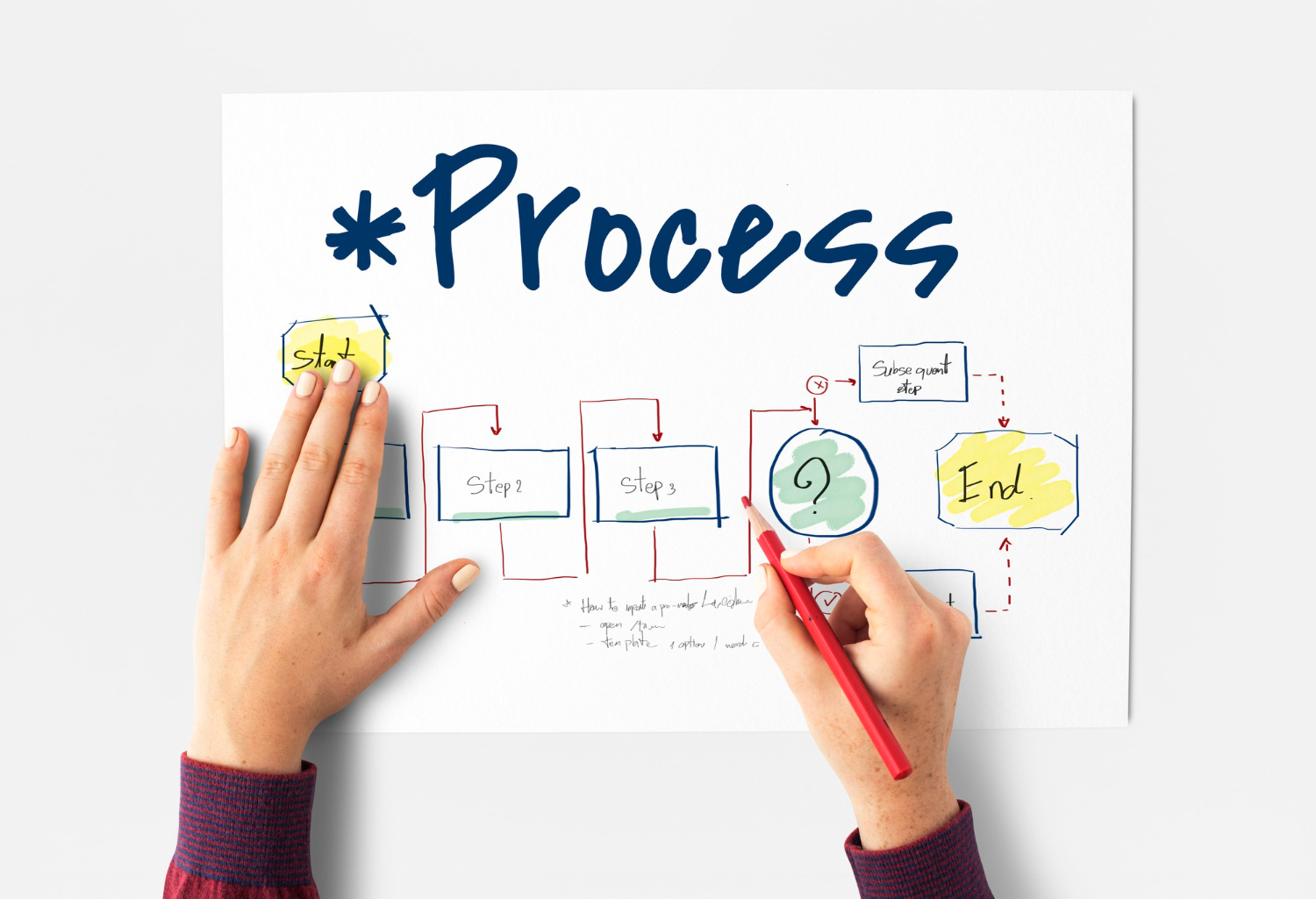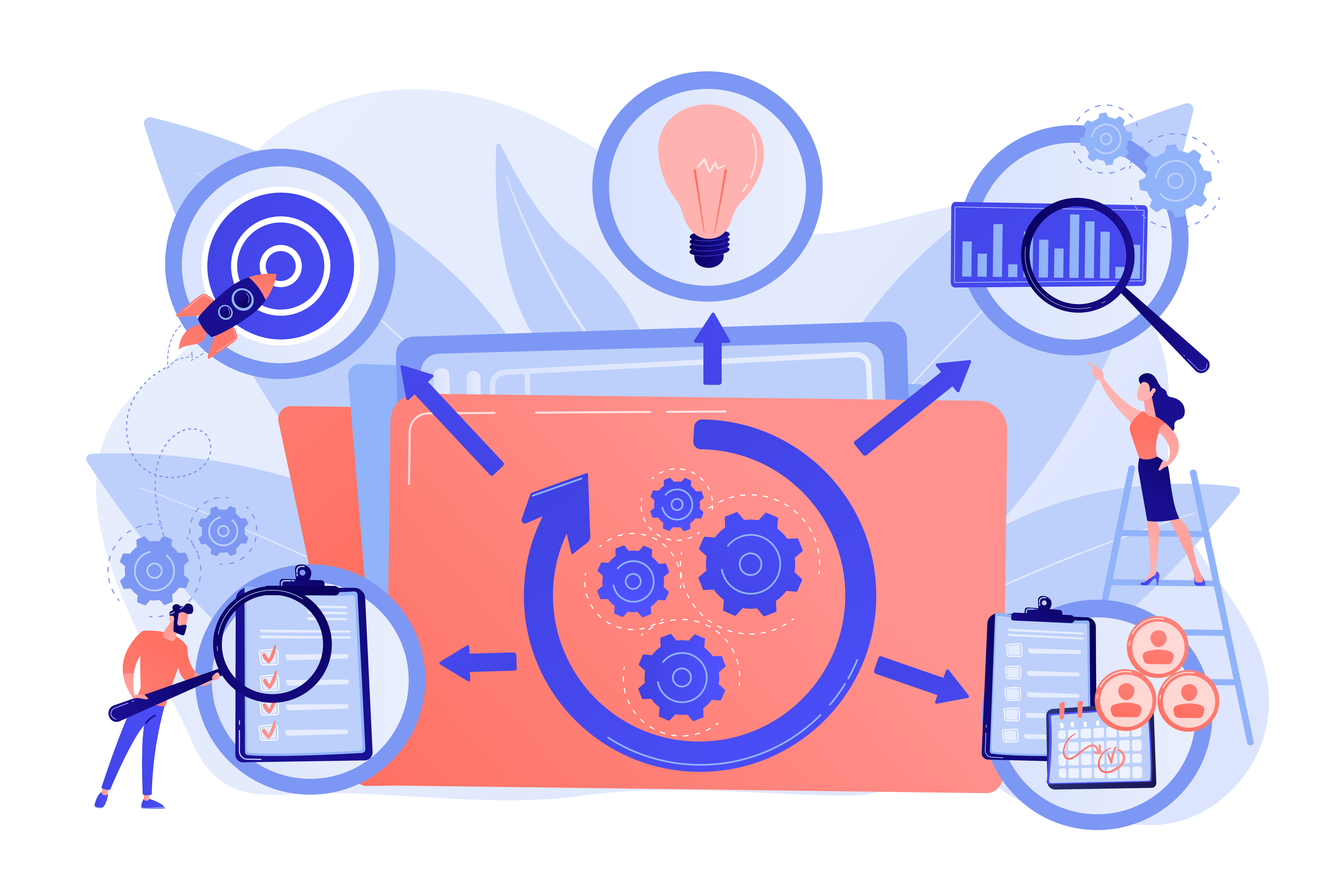Product development means turning an idea into a real product people can use or buy. It starts with thinking of a solution to a problem. Then, the team plans, builds, tests, and improves it until it’s ready for users. This process takes time and often needs feedback along the way.
Product discovery solutions help businesses make smart choices early, so they don’t waste money later. A good digital product discovery phase helps teams understand what people need, what works, and what doesn’t. This way, the final product has a better chance of success and solves real problems.

Benefits of the Product Discovery Process
Before building a product, it’s smart to ask a few key questions. Is this what people want? Will they use it? Does it solve a real problem? That’s where the product discovery process comes in. With strong product discovery services, businesses can avoid creating something no one needs:
- It reduces risk. Skipping discovery means taking a blind step. If the team moves too fast into building, they might head in the wrong direction. The product management discovery process helps catch problems early. It shows what might not work, or what people don’t like, before too much is spent.
- It helps understand real user needs. Many products fail because they’re built based on guesses. The discovery phase focuses on asking users, watching their behavior, and listening. This gives clear answers. With good product discovery services, teams don’t have to assume. They build what’s needed, not what they think is needed.
- It saves time and money. Building the wrong product is expensive. It takes months to create, market, and fix later. But when teams test ideas early with simple versions or mockups, they learn what works. So, instead of rebuilding later, they build the right thing from the start.
- It supports better team decisions. Discovery brings together designers, developers, business leads, and users. Everyone shares ideas and learns together. This teamwork helps the product grow in the right direction. It avoids long debates or working in silos. The team stays focused.
- It builds a strong product foundation. The discovery phase helps shape the product’s core. It sets a direction that makes sense. It answers questions like: What should we build first? What features matter most? This creates a clear path forward and makes the next steps easier.
Good products are built with care, learning, and real feedback. The product management discovery process is a smart way to test ideas without immediately proceeding to MVP development services. With trusted product discovery services, teams work with more confidence. They know they are building something that people actually want. And that makes a big difference.

Product Discovery Phases: How Ideas Turn Into Products
Before creating any product, there’s one thing every smart team should do first. Pause. Think. Ask questions. Is the idea useful? Will anyone pay for it? What problem does it fix? That’s where the product discovery phase comes in. It’s not about building yet. It’s about learning. This early step helps teams avoid building the wrong thing.
Understand the Problem
The first step is to look at the problem from all angles. Not just what you think the issue is, but how real people experience it. The team might hold simple interviews, send out short surveys, or watch how people deal with a task.
At this stage, the goal isn’t to sell an idea. It’s to learn if the idea is even worth exploring. You look for patterns:
- What do people struggle with?
- What are they using now to solve it?
- Are they even aware there’s a problem?
This part of the product discovery phase helps you avoid building for yourself instead of your user. And it lays the groundwork for everything else.
Define the Target Audience
Once you know the problem, the next step is to figure out who the product is for. This is not just about listing job titles or age groups. It’s about knowing people’s habits, daily struggles, and what matters to them. Good discovery work includes real user voices. It’s not enough to guess who might like your idea. The discovery phase of product development should help you clearly describe who the product is for and why it fits into their life.
By the end of this step, you’ll know whose problem you’re solving and how they think about it. That’s how you avoid creating something too general or too niche.
Check the Market
Even if your idea sounds new, there’s usually something similar out there. This step is about looking at what’s already available. What are others offering? What do users like or dislike about those options? You look at pricing, features, reviews, and any gaps you can fill. This isn’t about copying. It’s about finding your own space.
The discovery phase product management teams use often includes comparing tools or services already on the market. That way, you can build with confidence, knowing there’s a place for your product and a reason for someone to pick it.
Shape the Solution
Now that you know the problem, the people, and the current market, it’s time to start thinking about the solution. Not building it yet. Just shaping it. Here, teams create rough sketches, storyboards, or clickable screens to show how the product might work. These early versions help spark feedback.
This is a key part of learning how to do product discovery right. You test the idea without heavy coding or full design. People can react to something real, even if it’s just a paper drawing or a basic online mockup. It’s not about being perfect. It’s about seeing what clicks and what doesn’t.
Test with Real People
Once you have a basic idea of the product, it’s time to test it. This doesn’t mean launching it. It means showing the sketches or a simple version to the target audience. Ask honest questions. Does this solve your problem? What part feels confusing? Would you use it?
The goal is not to get compliments. The goal is to spot weak spots. Maybe your solution is too complex. Maybe it’s missing something important. Testing early helps you fix those issues before it costs too much to change. In the discovery phase of product development, this part is where most learning happens.
Set Priorities
Now that you have feedback, it’s time to make decisions:
- What features are most important?
- What can wait?
- What didn’t work at all?
Setting priorities helps the team know where to start when building. It’s easy to want everything at once. But that leads to delays and confusion. A good discovery phase product management team will guide the project to focus on what matters most first. The goal is to build a product that works well from the beginning, not a product packed with too much from day one.
Build a Plan
Finally, everything you’ve learned needs to turn into a clear plan. You take the findings from all the previous steps and shape them into a short, simple guide. It might include user problems, solutions, basic features, and next steps.
This plan will guide the AI product development team, designers, and other team members. It makes sure everyone is working with the same understanding. Without this, people may pull in different directions. But with it, the team can work faster and avoid confusion later.
When done well, discovery saves money, prevents mistakes, and builds products that people actually want. The discovery is very essential, as the better the discovery, the smoother the path ahead. And in the end, that’s how good ideas turn into products that work.

Product Discovery Process: Why You Should Never Skip It
The discovery phase is not just about research. It’s about asking the right questions. Who are we building this for? What problem are we solving? Is there a better way? The discovery process product management teams use helps answer these before spending months or years in development. Without it, things can go wrong quickly.
Risks of Skipping the Product Discovery Process
1. Building the Wrong Thing
This is the most common and painful risk. When you skip discovery, you work off guesses. You assume people want your product, but you don’t actually know. You think they’ll use certain features, but you haven’t asked. The result? A product that solves a problem nobody has or includes features nobody needs. You waste money and time building something that goes nowhere.
The product management stages always begin with discovery for a reason. It helps you avoid going in the wrong direction.
2. Not Knowing the Users
If you don’t talk to real users before building, how do you know what they want? Many companies build for “everyone” or for an imagined customer. But that’s risky.
Skipping user interviews, feedback sessions, or simple testing leads to surprises later. People might not understand your product. Or worse, they may not care about it at all. The steps in the discovery process always include getting user input early. That’s how you learn what matters most to them.
3. Poor Team Alignment
Without discovery, different people on the team may have different ideas about what they’re building. Designers think it’s one thing. Developers think it’s another. Marketing is confused.
This lack of clarity slows everything down. People argue, redo work, and miss deadlines. The discovery process product management uses helps everyone start on the same page. It creates a shared plan that guides each step forward.
4. Missed Market Fit
It’s possible your idea is good, but it’s not right for the market. Maybe someone else already does it better. Or maybe people don’t want to switch from what they already use.
Without research, you may miss these warning signs. You could build something that’s too similar to a big player or launch into a market that isn’t ready. Discovery helps you understand the market and find your spot in it. This is one of the early product management phases that saves teams from going head-to-head with giants.
5. Wasted Money and Time
This is where it hurts the most. Development is expensive. Design, testing, coding, fixing bugs, it adds up quickly. When you build the wrong thing, all that money is lost. Worse, you now have to go back, rethink, and rebuild. That could mean months of delay.
Skipping discovery might feel like saving time at first. But in most cases, it leads to more problems and higher costs down the line.
How to Avoid These Mistakes
Start with Simple Questions
Before you make a single design or write any code, ask the basics. What is the problem? Who has it? Why does it matter? These questions may sound simple, but they shape the whole product. The discovery process of product management always begins with clarity. It doesn’t need fancy tools. You can start with a notebook and a few user calls.
Talk to Users Early
This step is often skipped because it feels hard or time-consuming. But talking to 5 real users can give you more answers than 50 hours of guessing.
Ask open questions. Watch how people do things. Let them explain their habits. This will show you how your idea fits into their life or where it doesn’t. If you’re not sure how to begin, just ask: “What is the hardest part about doing X right now?” That one question can open the door to better thinking.
Build Quick Prototypes
You don’t need a full app to test your idea. A few sketches or clickable screens are enough. Show them to users. Let them react. This is one of the key steps in the discovery process. You test ideas in small ways before going big. This gives you fast feedback and helps fix mistakes early.
Work as a Team from Day One
Involve designers, developers, and business leads in discovery. Everyone sees things from a different angle. When they work together early, ideas get stronger. It also helps avoid confusion later. When people are part of the process, they understand why decisions were made.
Use Each Step to Learn, Not Prove
Don’t start discovery trying to prove your idea is right. Start it trying to learn if your idea needs to change. Be open to new directions. The most useful part of the product management phases is being honest about what’s not working. That’s how great products are born.

Why the Product Discovery Process Is Worth Your Time
Product discovery is not just for big companies or tech startups. It’s for anyone who wants to build something real and useful. Skipping it is like building a house without checking the ground first. The discovery process product management teams use exists for a reason. It brings focus, saves money, and helps avoid mistakes. It turns guesses into real insight.
The early product management stages might seem slow, but they’re what make the rest of the work faster and smarter. Each of the steps in the discovery process gives you something you need to move forward with less risk. With 90% of people discovering new products on YouTube and 49% using Google to find new items, early testing and research are not optional. They’re how modern products get seen and remembered.
Contents
Back to the top
